Archivo de noticias y eventos
1 - 50 de un total de 1805
También puede acceder a la lista de noticias publicadas en los medios relacionadas con el Instituto de Astrofísica de Andalucía - CSIC.
Pages

|
15/07/2025 - 12:30
A UV-to-IR view of a nearby high-z analog with JWST and HST to interpret the first galaxies In the current JWST era, detailed observations of the first generation of galaxies have started to revolutionize our knowledge of the early Universe, with outstanding but also puzzling discoveries. In particular, high-z systems in the epoch of reionization (z>6) are generally found to be low-mass, compact and metal-poor, and show prominent emission lines, indicating extreme radiation fields. However, their properties are not trivial to be... Dr. Matilde Mingozzi |

|
24/07/2025 - 12:30
The assembly process of star clusters: ALMA-IMF protoclusters traced by N2H+ In this talk I focus on the analysis of two of ALMA-IMF Large program protoclusters, the G353.41 and the G351.77, located at a distance of ∼2 kpc and with masses ∼2.5×10^3 M⊙ within 2pc^2 , and both embedded in larger-scale (∼8 pc) "mother filaments". We analyze the dense gas kinematics a 4 kau resolution traced by N2H+ (1−0). Focusing on G353, and from position-velocity (PV) diagrams we suggest that at large scales (~1 pc) the protocluster is... jane |

|
20/11/2025 - 12:30
LST Collaboration TBP LST Collaboration |
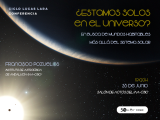
|
26/06/2025 - 19:00
¿Estamos solos en el universo? En busca de mundos habitables más allá del Sistema Solar En esta charla exploraremos cómo detectamos y estudiamos estos planetas lejanos, qué pistas nos ofrecen sobre su potencial para albergar vida, y repasaremos algunos de los resultados más sorprendentes y controvertidos publicados recientemente. Además, presentaremos varios de los proyectos en los que trabajamos en el Instituto de Astrofísica de Andalucía-CSIC (Granada), donde buscamos planetas que podrían ser habitables y, quién sabe, tal vez,... Francisco Pozuelos |
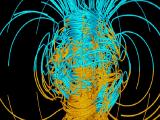
|
16/06/2025 - 18/06/2025
https://indico.iaa.csic.es/event/33/ Granada |

|
03/06/2025 - 05/06/2025
https://www.iaa.es/meetings/nomad-swt-27 Almuñecar |

|
03/07/2025 - 12:30
New clues about how Mars lost its water I will talk about a recent study led by IAA-CSIC focused on the atmospheric H escape during high obliquity periods in recent Mars (average ~35º in last millions of years, current value ~25º). Observations show that current thermal H escape (major water loss process) varies seasonally, with considerable increases during dust storms of both water abundance in the upper atmosphere and H escape rate. Present H-loss rates agree with 3D simulations... Dr. Gabriella Gilli |
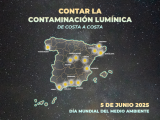
|
02/06/2025
Nace ‘Contar la contaminación lumínica de costa a costa’, una iniciativa nacional de divulgación por el Día Mundial del Medio Ambiente La actividad, coordinada por el CSIC, reunirá el próximo 5 de junio a referentes en la materia, que impartirán simultáneamente 21 charlas divulgativas en 19 ciudades españolas con el objetivo de concienciar al público general sobre esta amenaza creciente Además de coordinar la actividad, el CSIC contribuye a la sensibilización sobre este desafío ambiental mediante charlas abiertas al público en Barcelona, Granada capital, Salobreña y Monachil |
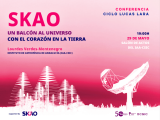
|
29/05/2025 - 19:00
El SKAO, un balcón al Universo con el corazón en la Tierra El Observatorio del SKA está construyendo dos radiotelescopios sin precedentes, por su sensibilidad y complejidad, en regiones remotas de Sudáfrica y Australia. Su alcance va más allá de lo puramente científico. En esta charla conoceremos sus últimos avances, la implicación española —con epicentro en Granada, desde el Instituto de Astrofísica de Andalucía (CSIC)— y el papel que juega nuestra ciudad en dicho proyecto global. En este rincón del... Lourdes Verdes-Montenegro |
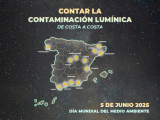
|
26/05/2025
Contar la contaminación lumínica de costa a costa Coincidiendo con el Día Mundial del Medio Ambiente, que se celebra cada 5 de junio desde 1972, el Consejo Superior de Investigaciones Científicas (CSIC), a través del Instituto de Astrofísica de Andalucía (IAA-CSIC), impulsa una acción de divulgación científica centrada en la contaminación lumínica y sus efectos sobre el medio ambiente y la sociedad Bajo el título ‘Contar la contaminación lumínica de costa a costa’, la iniciativa reunirá a... |

|
03/06/2025 - 12:30
Towards an observationally motivated AGN dusty torus model Several models of nuclear dust in active galactic nuclei (AGN) have been presented in the literature to determine its physical and geometrical properties, usually assuming the dust density distribution as the main aspect producing differences in the mid-infrared (MIR) emission of AGNs. My PhD research investigates the physical and chemical properties of dust in the torus of AGNs using MIR spectral analysis and radiative transfer (RT) modeling.... Ulises Reyes Amador |

|
22/05/2025 - 12:30
Galaxies Hidden in the Forest as a new BAO tracer (and other applications) The acceleration of the expansion rate of the Universe is yet to be explained. Several models, including LCDM, try to explain this acceleration. LCDM bases its explanation on a mysterious dark energy, adding up to ~75% of the total energy density of the Universe. Other models present modified theories of gravity to explain this effect. But which one is correct? The expansion history of the Universe is a great observable to discriminate between... Dr. Ignasi Pérez Rafols |
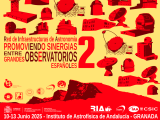
|
10/06/2025 - 13/06/2025
https://riastronomia.es/promoviendo-sinergias-entre-grandes-observatorios-espano… Granada |

|
27/05/2025 - 12:30
Jets in Planetary Nebulae At the end of the 20th century, we thought we had a solid understanding of how low-mass stars evolved into planetary nebulae. However, by studying the stages leading up to these nebulae, we discovered a puzzle: the energy needed to form them was too large to be explained by traditional models. This revelation led us to explore a more complex scenario: the interaction of binary stars. The gravitational energy and angular momentum of these... Dr. Guillermo García Segura |

|
05/06/2025 - 12:30
SO colloquium: What can we expect and hope for in quantum computing? Quantum computing can solve specific problems much faster than classical computing concepts. Promising applications include material science and chemistry as well as optimizations problems Once quantum computing is fully matured, it can even crack the most commonly used encryption methods and thus make emails, credit cards, bank transactions, etc. insecure. In recent years, quantum computing has made significant progress, which raised interest... Dr. Michael Hartmann |
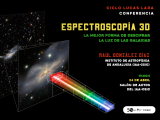
|
24/04/2025 - 19:00
Espectroscopía 3D: la mejor forma de descifrar la luz de las galaxias La espectroscopía bidimensional, también conocida como espectroscopía 3D, es una técnica revolucionaria que permite obtener simultáneamente información espacial y espectral de alta resolución. Esta capacidad ha representado un avance significativo en diversos campos de la astrofísica, como la evolución química de las galaxias y la cosmología. En esta conferencia haremos un recorrido histórico por las técnicas... Raúl González Díaz |
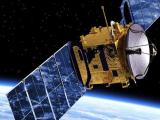
|
26/05/2025 - 29/05/2025
https://indico.iaa.csic.es/event/29/ Granada |

|
10/04/2025
“El universo a bocados”: una experiencia científica y gastronómica para saborear la historia del cosmos En el marco del 50 aniversario del Instituto de Astrofísica de Andalucía (IAA-CSIC), el restaurante María de la O será el escenario de una propuesta única en la que astronomía y gastronomía se dan la mano para ofrecer una experiencia sin precedentes. Chechu González, chef del restaurante María de la O, y Emilio García, responsable de la Unidad de Cultura Científica del IAA-CSIC, unen alta cocina y divulgación científica en un viaje a través de... |
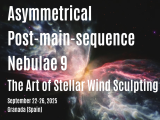
|
22/09/2025 - 26/09/2025
https://www.granadacongresos.com/apn9 Granada |

|
16/10/2025 - 17/10/2025
https://indico.iaa.csic.es/event/26/ Granada |

|
17/06/2025 - 12:30
SO Colloquium: The multiple aspects of Star-Planet Interactions Star-Planet Interactions (SPIs) encompass a range of physical processes that occur in close-in exoplanetary systems, where the proximity between a star and its planet leads to complex magnetic, gravitational, and atmospheric effects. These interactions can influence both stellar activity and planetary evolution, making them crucial to our understanding of exoplanetary environments, habitability, and observational signatures across multiple... Dr. Rim Fares |

|
08/04/2025 - 12:30
Synthetic ngVLA Observations of Ionized Gas in Massive Protostars and Future Prospects for Protoplanetary Disk Studies with ngVLA and SKA. The study of protoplanetary disks is essential for understanding stellar evolution and the origins of planets. However, these systems present significant observational challenges due to their small angular size, low surface brightness, and complex structure. Radio interferometry provides a unique advantage by observing dust and gas at wavelengths that penetrate the dense regions where the protoplanetary disk forms. The upcoming Next Generation... Dr. Miguel Jáquez |
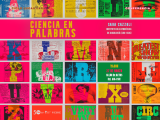
|
27/03/2025 - 19:00
Ciencia en palabras Peter Brook, uno de los directores más influyentes del teatro contemporáneo, decía que “lo inesperado no tiene límites”. Y así es. Por ejemplo, se puede encontrar la ciencia en lugares inesperados, como los discursos de ingreso de la Real Academia Española (RAE). Estos textos son ensayos muy concretos sobre un tema y, también, son una instantánea de la sociedad, del arte y de la ciencia en diferentes contextos... Sara Cazzoli |

|
01/04/2025 - 12:30
A Minion in PANIC arrives to Calar Alto Observatory Calar Alto has a new tenant: PANIC, the PAnoramic Near-Infrared Camera for Calar Alto. PANIC is a project jointly developed by the MPIA in Heidelberg, Germany, and the IAA in Granada, Spain, for the Calar Alto Observatory (CAHA; Almería, Spain). This instrument can work with the 2.2 m and 3.5 m telescopes. Its original detector has been recently replaced by a monolithic HAWAII-4RG, therefore the instrument covers now a field of view of 26×26... Ana Guijarro, Vianak Naranjo, Antonio J. García, José M. Ibáñez and Sara Muñoz |

|
23/10/2025 - 12:30
WST: The Wide Field Spectroscopic Telescope The WST project aims to design and construct an innovative 10-metre class wide-field spectroscopic survey telescope (WST) in the southern hemisphere. It will feature the parallel operation of two cutting-edge instruments: a high-multiplex (30,000), large field-of-view (3 square degrees) multi-object spectrograph (MOS) operating in both low- and high-resolution modes, and a giant panoramic integral field spectrograph (IFS). WST’s ambitious top... Prof. Roland Bacon |

|
08/05/2025 - 12:30
SO Webloquium: Protecting Dark and Quiet Skies from Satellite Interference: Challenges and Mitigation Efforts The rapid deployment of satellite megaconstellations is fundamentally changing the sky, posing a growing challenge to both optical and radio astronomy. While the issue is widely acknowledged, the full extent of its impact, the ongoing mitigation efforts, and the potential future scenarios remain less well understood. The International Astronomical Union (IAU) established the Centre for the Protection of Dark and Quiet Skies (CPS) to coordinate... Dr. Federico Di Vruno |

|
29/05/2025 - 12:30
SO colloquium: The PARSEC view of star formation and the interstellar medium in galaxies The PARSEC project is a multiwavelength investigation of the centers of galaxies at parsec scales. In this presentation, I will provide a direct visualization of the star formation process in the centers of galaxies, resolved into their building blocks—the star clusters. I will address the triggering process of star formation in a range of galaxies with different morphologies and levels of nuclear activity. This triggering process will be... Dr. Almudena Prieto |

|
01/01/2025 - 09:15
TBP TBP TBP |

|
03/04/2025 - 12:30
Phase curve fitting in the context of large-scale photometric surveys Nowadays, we are experiencing a revolution in astronomical surveys. Thanks to ground-based and orbiting telescopes, millions of observations of asteroids in various photometric filters are available. The main objective of our project is to develop tools for reading, processing, and analyzing large volumes of data. We’ve successfully determined phase curves for thousands of asteroids in orange and cyan filters from the latest ATLAS Solar System... Dr. Milagros Colazo |

|
25/03/2025 - 12:30
What Stops Star Formation in Isolated Dwarf Galaxies in the Most Underdense Cosmic Regions? The shallow potential wells of low-mass galaxies, commonly known as dwarf galaxies, make them highly susceptible to environmental effects, often leading to the complete cessation of star formation. But is quenching solely driven by external forces in harsh environments, or can dwarf galaxies also self-quench through mechanisms like strong stellar winds or supernova feedback, independent of external influences? In this contribution, I present our... Dr. Bahar Bidaran |
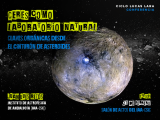
|
27/02/2025 - 19:00
Ceres como laboratorio natural. Claves orgánicas desde el cinturón de asteroides En 2017, la sonda Dawn reveló la presencia de material orgánico en la superficie de Ceres, un hallazgo que marcó un hito en la exploración del planeta enano más cercano a la Tierra. Estudios recientes han identificado nuevas regiones con indicios de compuestos orgánicos adicionales, ampliando nuestra comprensión de este fascinante mundo. Durante la charla, exploraremos qué hace de Ceres un objeto tan relevante, profundizando en los... Juan Luis Rizos |

|
11/02/2025
Día Internacional de la Mujer y la Niña en la Ciencia 2025 El Instituto de Astrofísica de Andalucía se suma un año más a la celebración del Día Internacional de la Mujer y la Niña en la Ciencia, que tiene como objetivo visibilizar la labor científica de las mujeres y fomentar las vocaciones en las niñas |
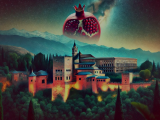
|
23/06/2025 - 27/06/2025
https://talesofblackholes.iaa.csic.es/ Granada |
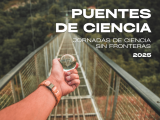
|
27/01/2025
Puentes de Ciencia: La investigación como herramienta de unión cultural «Puentes de Ciencia» es un programa de divulgación científica inclusiva que busca acercar la investigación realizada en los centros del CSIC en Granada y el Instituto DaSCI de la Universidad de Granada a colectivos en riesgo de exclusión social |

|
27/01/2025
El IAA se suma a la décima edición de Desgranando Ciencia: un encuentro con historia, ciencia, humor y arte El festival de divulgación granadino conmemora sus diez años bajo el lema “Historia(s) de la Ciencia”, los días 16 y 17 de mayo en el Parque de la Ciencias El evento, de acceso gratuito, también celebrará los aniversarios de algunas de sus entidades colaboradoras: los 30 años del Parque de las Ciencias, los 50 del Instituto de Astrofísica de Andalucía y los 70 de la Estación Experimental del Zaidín |

|
11/02/2025 - 12:30
An Unusual Triple System: CN Lyn Triple star systems hold significant astrophysical importance, offering profound insights into stellar evolution, dynamical interactions, and mass transfer processes. Due to their complexity compared to single or binary star systems, triple systems facilitate a more comprehensive understanding of stellar processes from formation to final stages. Thanks to large photometric surveys, such as Kepler, researchers were able to detect triple systems... Dr. Gökhan Yücel |

|
11/03/2025 - 12:30
J-HERTz: J-PLUS Heritage Exploration of Radio Targets at z < 5 In this talk, I will present J-HERTz, the J-PLUS Heritage Exploration of Radio Targets at z... David Fernández Gil |

|
10/04/2025 - 12:30
Impacts of Cosmic Dust in the Atmospheres of Mars and Venus Cosmic dust particles are produced from the sublimation of comets and by collisions between asteroids. Because the particles enter a planetary atmosphere at hypersonic velocities, collisional heating with air molecules causes a fraction of them to melt, leading to vaporization of their metallic constituents. The injection of these elements causes a wide variety of atmospheric phenomena in the terrestrial atmosphere, including the formation of... Dr. John Plane |

|
26/02/2025 - 12:30
ORCA-TWIN: Fast & low read noise CMOS camera project for planetary science and astrophysics The emerging German Center for Astrophyics (DZA) aspires - next to activities for gravitational wave astronomy, radio astronomy, and big data - to engage in CMOS sensor development with the local semiconductor industry and international partners. In parallel to establishing a first detector lab that has become operational recently, two off-the-shelf CMOS cameras were procured to explore hands-on the capabilities for time domain astronomy and solar... Dr. Martin M. Roth |
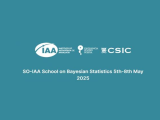
|
05/05/2025 - 08/05/2025
https://indico.iaa.csic.es/event/24/ Granada |

|
25/02/2025 - 12:30
Chemical Fingerprints of Galaxy Evolution I will summarise the main projects we are currently working on that use the chemical abundances and pattern as fossil records of galaxy evolution. In particular, the chemical abundances of the star-forming regions of galaxies contain valuable information about their assembly histories, as well as about the processes that regulate the history of star formation and the mixing of chemical elements. In particular, they encode the history of recent... Dr. Patricia B. Tissera |
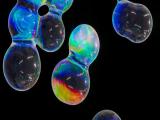
|
03/02/2025 - 20/02/2025
https://indico.iaa.csic.es/event/22/ Granada |

|
06/03/2025 - 12:30
SO Colloquium: Gravitational wave astrometry with the SKAO Pulsar timing array detection of a gravitational wave background represents a milestone in the field of gravitational wave astronomy. However, the origin of such a signal is still a matter of intense debate: while supermassive black hole binaries formed as a result of galaxy mergers represent the most obvious candidate for the gravitational wave signal, many "new Physics" models can potentially explain at least part of the detected background.... Dr. Nicola Bellomo |
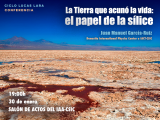
|
30/01/2025 - 19:00
La Tierra que acunó la vida: el papel de la sílice En esta conferencia exploraremos los nichos geoquímicos de la Tierra primitiva que pudieron albergar la transición de la geoquímica inorgánica a la geoquímica orgánica, y de ahí a la química prebiotica y la emergencia de la complejidad que derivaría en las primeras estructuras similares a la vida. Desvelaremos el papel crucial de los minerales, en especial de la sílice, en la autoorganización mineral y en la... Juan Manuel García-Ruiz |
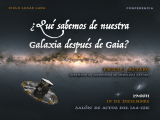
|
19/12/2024 - 19:00
¿Qué sabemos de nuestra Galaxia después de Gaia? En los últimos 11 años, los resultados de la misión Gaia han revolucionado nuestro conocimiento sobre la Vía Láctea, ofreciendo un nivel de detalle sin precedentes. Este observatorio espacial ha cartografiado con extrema precisión las posiciones, movimientos y fotometría de más de mil ochocientos millones de estrellas, proporcionando una visión tridimensional de nuestra galaxia. Gracias a Gaia, ahora entendemos mejor la estructura espiral de la... Emilio J. Alfaro |

|
12/12/2024 - 12/12/2024
https://indico.iaa.csic.es/event/19/ Granada |

|
21/01/2025 - 30/10/2025
https://www.iaa.es/meetings/academic-spanish-course-foreigners-2025 Granada |
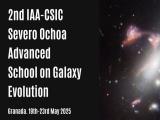
|
19/05/2025 - 23/05/2025
https://www.granadacongresos.com/galevol2025 Granada |

|
30/01/2025 - 12:30
SO Colloquium: Modelling of large-scale magnetic field in low-mass stars Recent spectropolarimetric observations of low-mass stars show that large-scale components of their magnetic fields can exhibit cyclic variations or reversals. This magnetic activity affects detection of exoplanets and estimation of their masses, and so its modelling is particularly important. In convective stellar envelopes, magnetic fields are created through dynamo action - systematic stretching and twisting of magnetic field lines by... Dr. Anna Guseva |

|
28/01/2025 - 12:30
El crecimiento de la complejidad en el Universo La existencia de vida es uno de los grandes problemas cosmológicos. Aunque la vida sea un hecho observado en un único planeta, el proceso de complejización que supone, debe obedecer a leyes generales universales. Varios autores claman por una “missing law” termodinámica, a la búsqueda de la cual se incorpora la hipótesis que presentamos aquí. El surgimiento y la evolución de la vida son resultado del mismo principio. Se deduce que la complejidad... Dr. Eduardo Battaner |